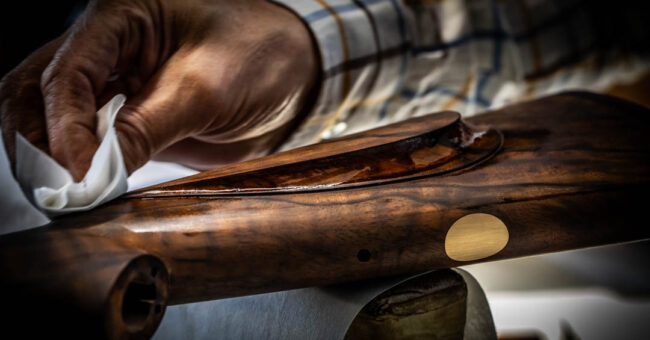
The stocker has, by this point, worked hard to create the perfect shapes and proportions. The stock finisher is tasked with making it glow and capturing the depth and beauty within the natural wood. The finished result will validate the work of the man who selected the blank, the man who shaped it as well as the man who finished it. The full picture will not emerge until that final finish is dry.


Amateur gunsmiths ask us more about stock finish than any other aspect of our work. Perhaps this is because applying finish appears to be an art and it is something that the layman imagines he will be best able to tackle, as it requires no special tools or facilities.
This is both true and false; stock finishing is a simple process and it requires no more than some oil, a cloth and a pair of hands and a drying rack. However, the devil is in the detail and to create a perfect finish, a great deal of skill and experience is required.

One shaped and smoothed stock might look much like any other but no two walnut blanks are the same, nor do they act the same. The stock must first be lightly wetted to raise the grain, which is then sanded back and the process repeated until smooth. Next, the first type of oil is applied. This is known as ‘red oil’ in the trade and it is made by steeping linseed oil in dried and shredded alkanet root, for months.
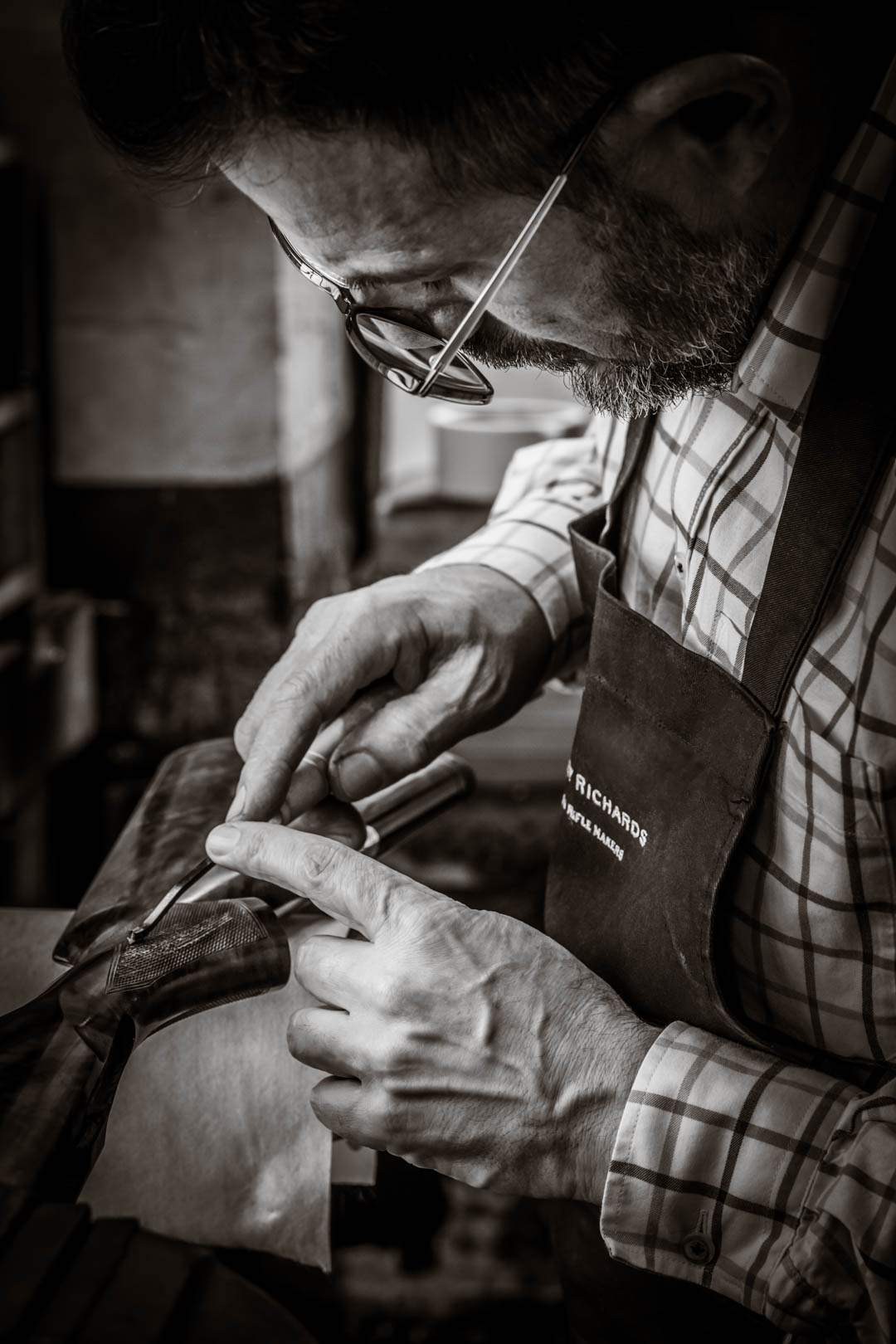
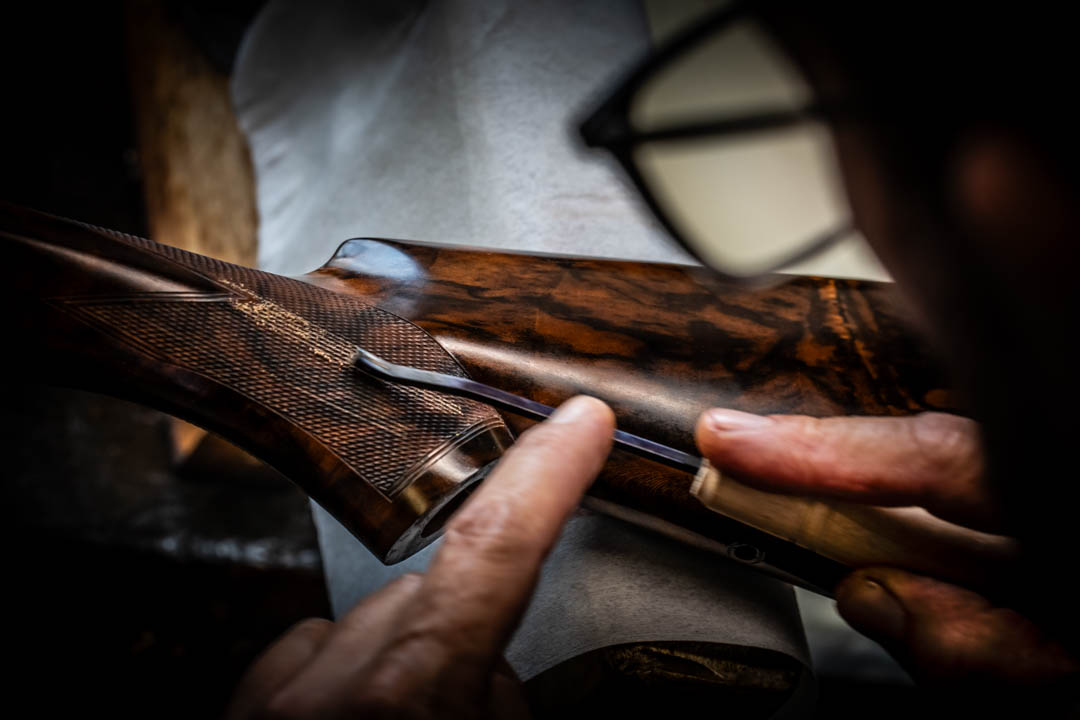
This red oil is applied repeatedly (typically sixty applications) allowing it to seep into the grain. It serves to darken the wood and increase the contrast between the black lines and the background, helping to develop depth and warmth. When the finisher is satisfied that the best colour has been achieved, the application of red oil stops and the stock is allowed to dry. At this point there is no finish ‘on’ the wood, the oil applied so far is ‘in’ the wood.

Finishing oil is not coloured. It is made from a blend of linseed oil, waxes and driers. Recipes for this are legion and many are closely held secrets. In ‘the good old days before health and safety at work’ many finishers used to swear by lead-based driers because they imparted a sheen that substitutes have never quite replicated. Lead-based products are no longer available, as they are thought to carry a cancer risk.
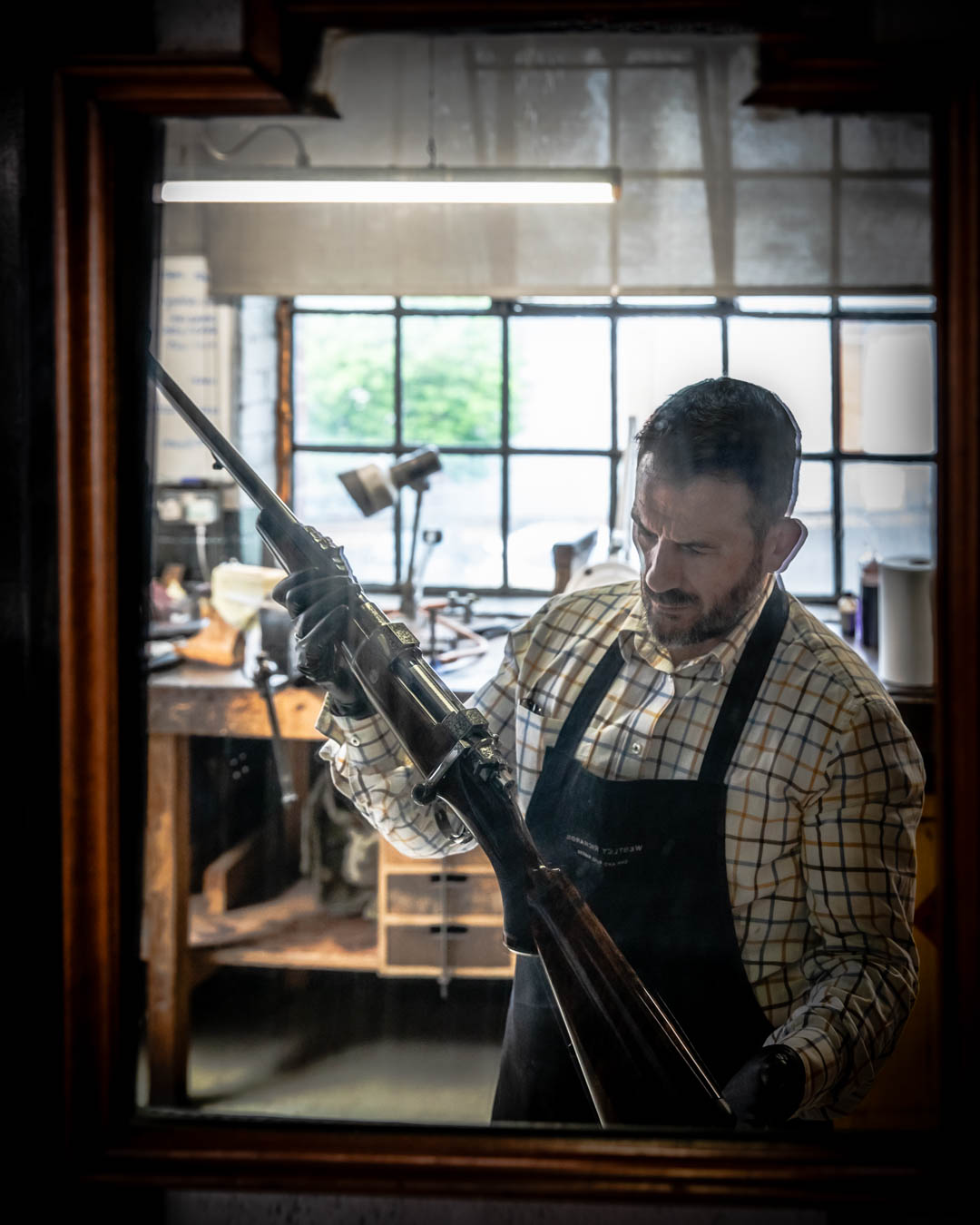
Some finishers make their own finishing oil, others opt for one of the commercially available brands, which are very good. Some mix and match, using their experience to experiment or react to the way a particular stock is responding to the finish being applied.


At Westley Richards, we now generally apply a high-gloss finish to the wood, which complements the outstanding engraving and metal finishes adorning the steel parts. It is harder wearing than some traditional ‘soft’ slacum oil finishes that were used in the past. However, if a customer has a preference for a particular type of finish, that can be accommodated.
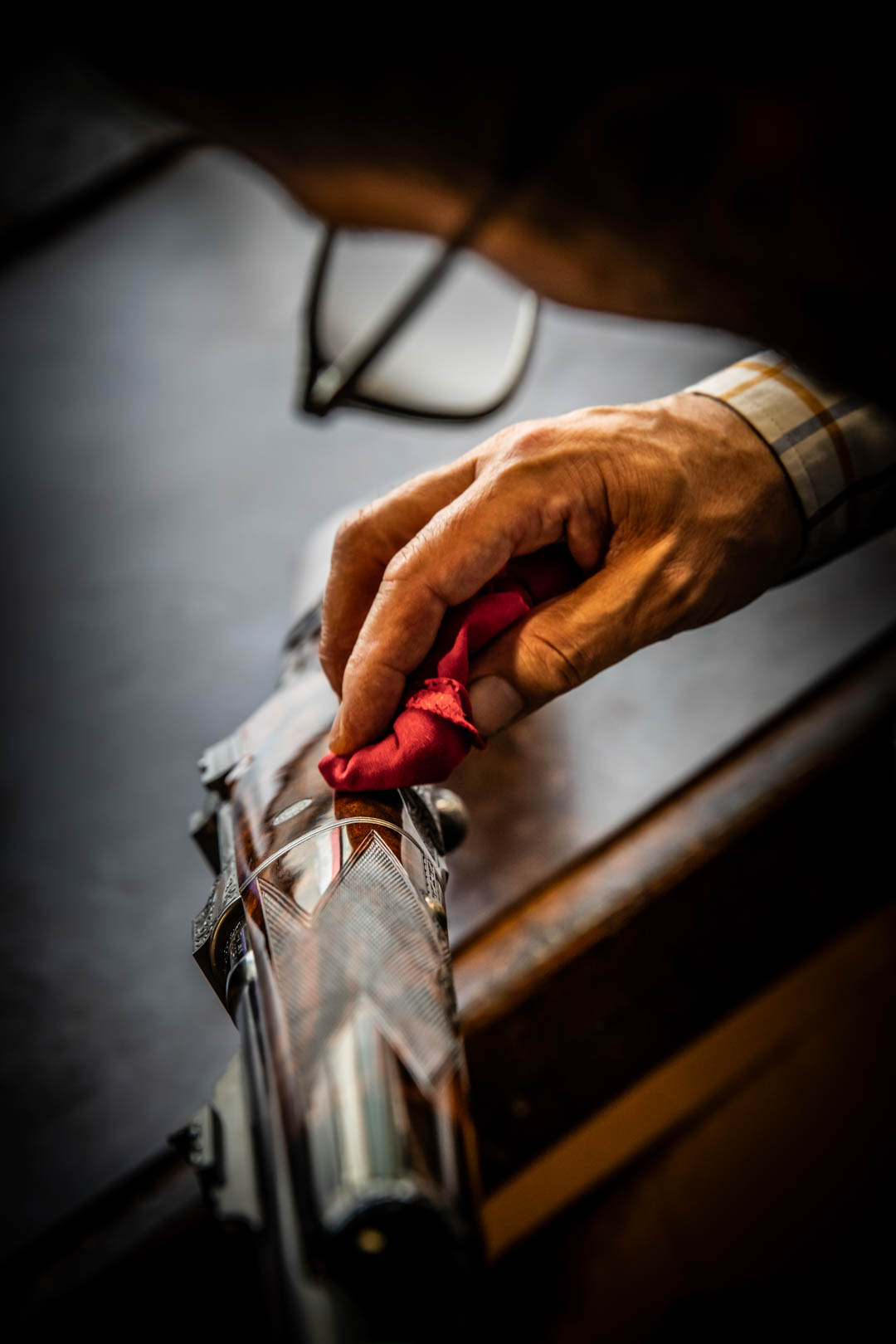
Traditionally, the process involves applying the oil to the surface in an even layer and then allowing it to dry until it becomes just the right degree of ‘tacky’. Then, the finisher, using a cloth with a little oil on it, ‘rubs off’, the tacky oil, which actually rubs it deep into the wood, where it begins to build up, filling the grain and creating a finish. Multiple applications and rubbings-off are required to build a finish, with drying time, to cure each layer, allowed in between.
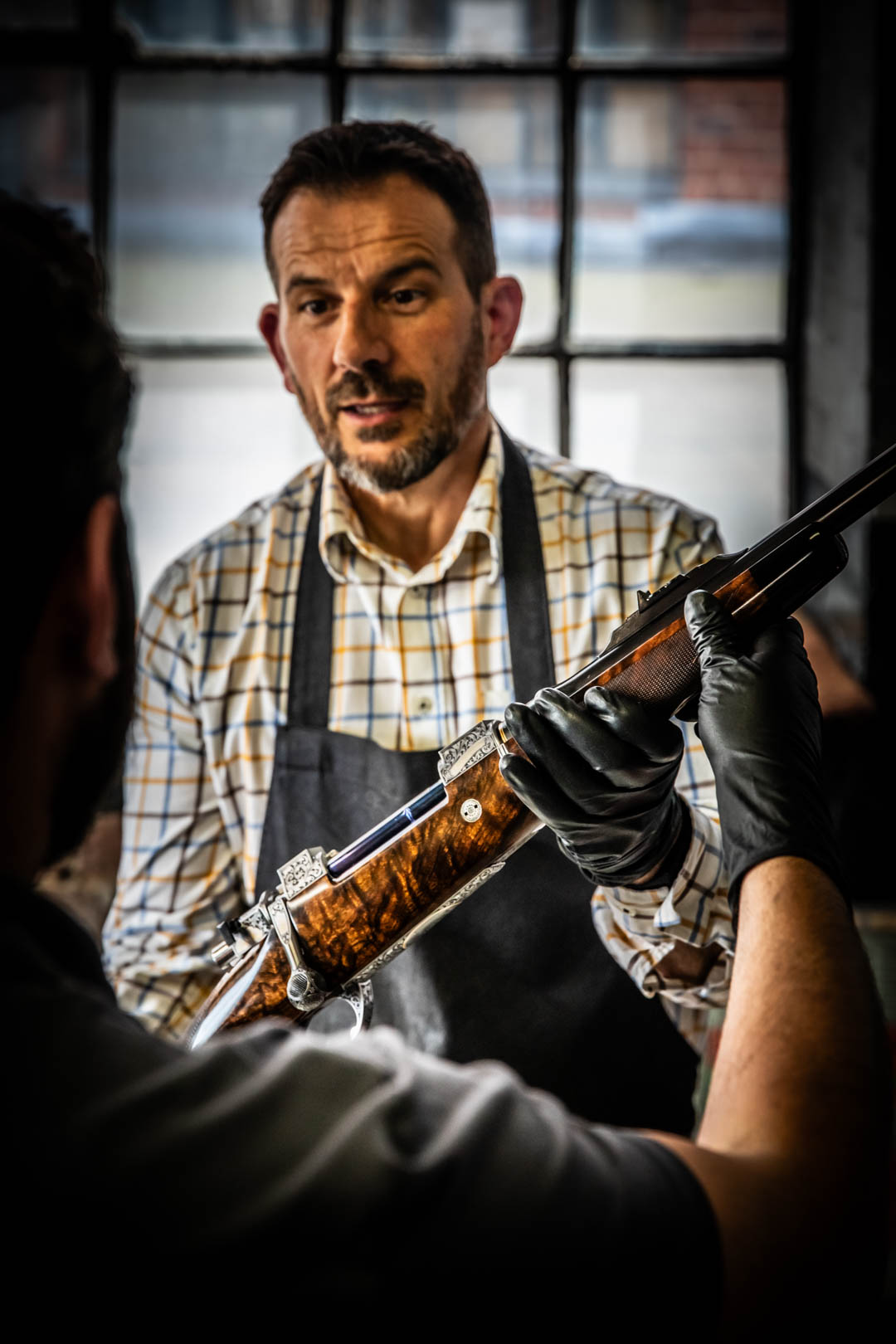
For a Westley Richards high-gloss finish, the oil is applied in very thin layers and allowed to dry, until it builds into a deep, lustrous sheen, with real depth. This is more water resistant than a soft finish and retains its shine better. It is not uncommon for a stock to receive one thousand coats of oil over a six week period. With the finish two-thirds complete, the gun goes for chequering. It then comes back for the final stages of oil finishing.

Once the stock finisher is happy with the results of his weeks of work, the gun is assembled, test shot, photographed and then taken to the finishing shop for what we call ‘make nice’, which addresses any tiny scuffs, marks or imperfections anywhere on the completed gun, so that it goes into its case entirely blemish-free.
This is the only time your gun will ever look ‘new’!
Whether for the discerning collector or the avid sportsman, Westley Richards firearms represent the epitome of excellence in the world of bespoke gunmaking. Known for the droplock shotgun, over and under shotgun, double barrel rifle and bolt action rifle, the company has achieved an illustrious 200 year history of innovation, craftmanship and artistry. As part of our best gun build, clients can choose from three levels of gun engraving: the house scroll; signature game scenes; and exhibition grade masterpieces. All Westley Richards sporting arms are built at their factory in Birmingham, England. Discover more about the gunmaking journey at our custom rifles and bespoke guns pages.
